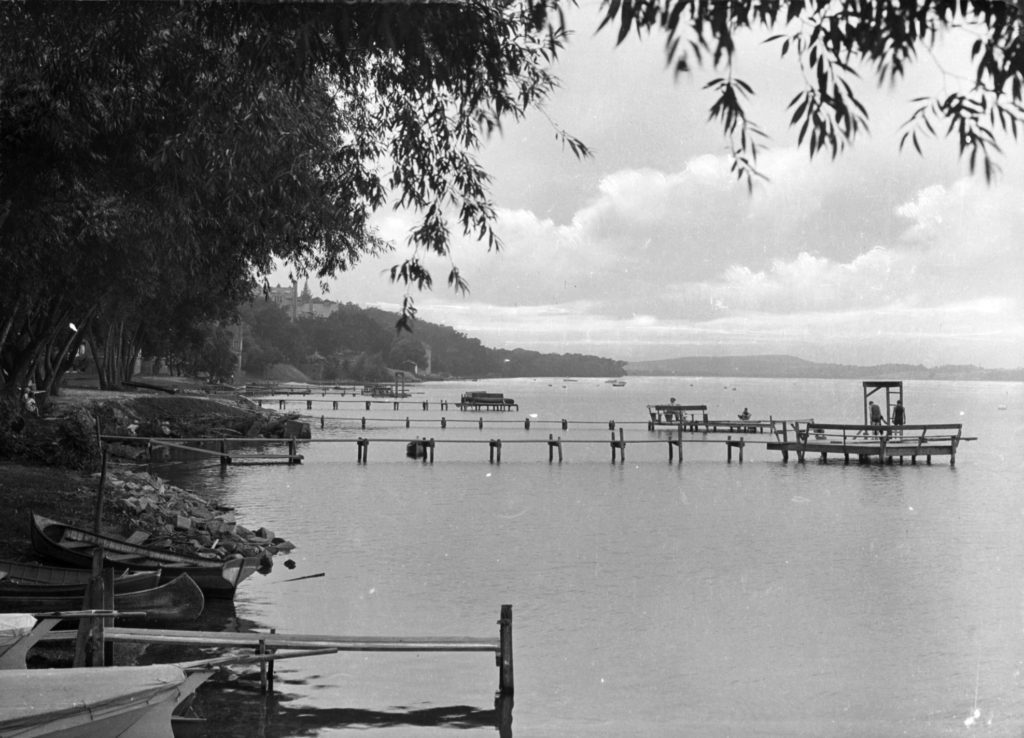“Creation of the District: Opposition to the Middleton plant” is the second in a four-part series outlining the formation of the Madison Metropolitan Sewerage District. This second part in the series outlines the opposition against a Middleton wastewater treatment plant. Visit the History section of our blog for additional articles in the series, as well as “Flow of history…” articles documenting the early years of wastewater treatment in the Madison area.
By Paul Nehm
Shortly after the awarding of contracts for the construction of the Middleton wastewater treatment plant, a protest arose from several lakeshore property owners in the area between Madison and Middleton. This area was unincorporated with the Madison sewer system, extending only as far west as the intersection of University Avenue and Farley Avenue. The property owners claimed that they did not have an opportunity to be heard and were led to believe that the project had been indefinitely postponed because of excessively high bids. Village officials replied that referenda had been held and that all meetings on the project had been noticed and were open to the public.
At some point, several of the property owners engaged Madison officials on the possibility of connecting the Middleton sewer system to the Madison system. A meeting was held on October 14, 1929, between two of the lakeshore property owners, Madison officials and members of the State Board of Health.
Plans in motion come to a sudden halt
This group decided that a meeting should be held in the Capitol building the next day, October 15, 1929, and that officials from the City of Madison, the Village of Middleton, the Village of Shorewood Hills, the Town of Middleton and the Town of Madison should be asked to attend the meeting along with owners of property between Madison and Middleton.
It is surprising how little notice (1 day) was given for this meeting. It is also noteworthy that the force main from the edge of the Village of Middleton to the site of the treatment plant had already been laid.

Opinions suddenly change, too
It is also interesting that officials with the State Board of Health would so quickly change their opinion on the Middleton plant. Earlier in the year, they had lauded the plant and gave assurances that it would not have any negative impact on the lake. In a May letter to the Middleton News-Herald, the Board of Health said, “With triple protection afforded by the various forms of treatment, the possibility of a nuisance developing at or near the disposal plant is considered negligible, and it need not be feared that the Mendota Beach vicinity will be detrimentally affected for bathing.”
The Wisconsin State Journal was quick to express its support for a metropolitan district. In an October 15, 1929, slightly condescending editorial titled “Middleton – Its Own Great Future May be Damaged by Sewage Disposal Location,” the newspaper supported the fact “that Madison and the state are offering cooperation to help solve Middleton’s problem.” It explained to Middleton that “a disposal plant in itself, no matter how properly cared for, is not a good advertisement for a community that wants to attract home builders.”
At the October 15 meeting, as an example of the Middleton Village Board’s concern for keeping the lake free from pollution, they noted that three of the members of the Board had property at Middleton Beach where the effluent would enter the lake.
Interestingly, one of the property owners that spoke in favor of the creation of a metropolitan sewerage district was an owner of a farm in the Town of Madison. This was E. N. Warner, who was later appointed as one of the original Commissioners of the District. He noted that he expected that at some time in the future his farm would be platted.
Underlying motivations: politics or pollution concerns?
Although Madison Mayor Schedeman said Madison’s goal at the meeting was to determine the sentiment of Shorewood Hills and other areas for a metropolitan plan, the Capital Times reported that the mayor appointed a ten-member committee to “combat the attempt of Middleton to build a sewer plant.” The Wisconsin State Journal reported that the mayor and the city engineering department were developing a plan to bring Middleton and the large area between the two municipalities into a metropolitan sewerage district.
Officials at the meeting said the expected flow from Middleton would be 20,000 gallons per day and estimated that Shorewood Hills would have a flow of about 100,000 gallons per day. Although there was no mention of it at the meeting, the flow from the state facilities on the north side of Lake Mendota was between 300,000 and 500,000 gallons per day at that time.
Leon A. Smith, the superintendent of the Madison Water Utility, discussed the potential need to use Lake Mendota as a major source of drinking water for the community. He noted that the population of Madison was doubling every 15 years. He expected that by 1940 there would be 100,000 residents in Madison. He estimated that this would be the maximum population that could be served by municipal wells. At that point, water would need to be drawn from Lake Mendota. Although the lake water could be purified, he felt that the public may not accept it because sewage had been discharged into the lake.
Again, it is surprising that the concern for lake pollution seemed to be directed at the Middleton plant while the state hospital was discharging more partially treated wastewater into the lake.
Some of the information for the article series and Middleton wastewater treatment was found in “Madison – A History of the Formative Years” by David V. Mollenhoff and in articles written by early leaders from Madison’s public works sector. The article was originally published in the Spring 2022 edition of the District’s newsletter, The Clarifier.






